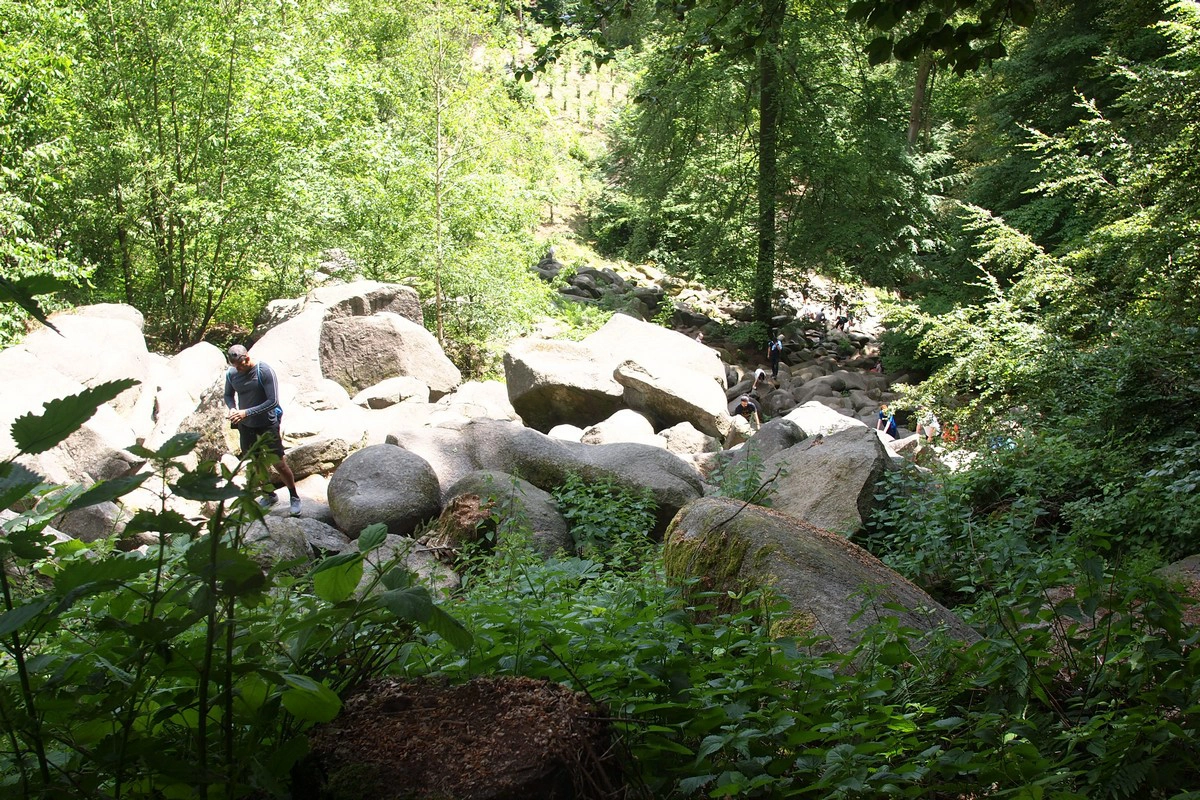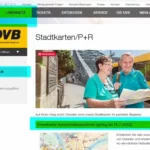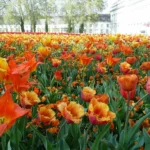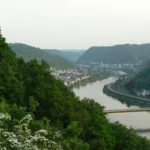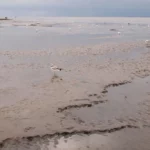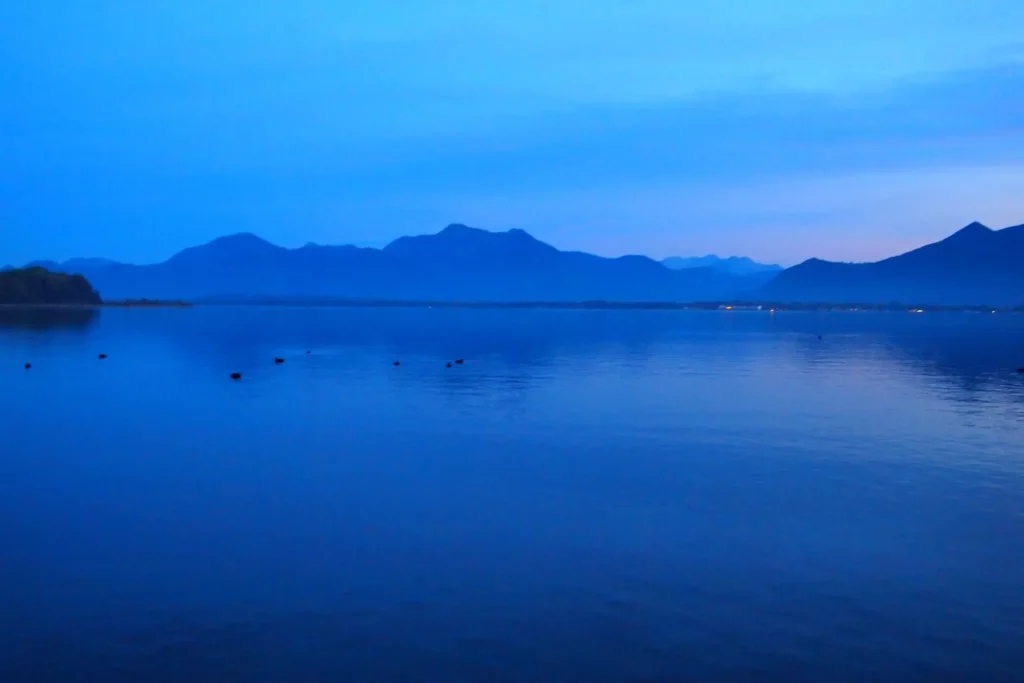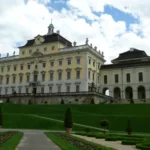Last Updated on 12/05/2024
Odenwald is a forested and mountainous region between Frankfurt, Heidelberg and Heilbronn. The mountains are quite high in places. Every time we passed through Odenwald, it was a trip without confidence that we would get where we needed to go on time. The road stretched into infinity and led to completely unexpected places. In my opinion, ghosts from neighboring Spessart have long since moved to this enchanted place, namely to the village of Mudau, which, after two hits, we decided to avoid by any means.
Maps nearby:
North: Spessart. Mespelbrunn castle
East: Romantic Franconia
From Ulm to Ellwangen. Albtrauf and Bavarian Swabia
North-West: Attractions around Frankfurt am Main, along the Rhine to Koblenz
Castles on the Middle Rhine on the map. 1. From Rüdesheim to Bacharach
South: Castle Road (Burgenstrasse). 1. Neckar cycle route Mannheim – Eberbach
Castle Road. 2. Neckar valley cycle route. From Zwingenberg to Bad Wimpfen
Castle Road. 3. From Sinsheim to Rothenburg ob der Tauber
90+ parks and gardens in Germany on the map
If you decide to take a shortcut through Odenwald, keep in mind that the autobahn is in most cases faster. The exception is a multi-hour traffic jam due to an accident. Most roads are laid from north to south. It is much more difficult to move across.
The geological uniqueness of the region allowed it to be included in the UNESCO list. Educational trails are laid out in special places.
Now the question is: why should you go there at all? If you live somewhere nearby and are choosing a destination for a day trip, or are driving past and wondering where to make a useful stop, there are some interesting/very interesting places around the edges of the region.
The top attractions are located on the southern edge of the Odenwald – Heidelberg and the Neckar Valley, which can be visited using any transport and is especially great by bicycle.
Table of Contents
- Odenwald sightseeing video
- Odenwald map of attractions
- 1. Bad Mergentheim
- 2. Stalactite cave near Eberstadt (Eberstadter Tropfsteinhöhle)
- 3. Walldürn
- 4. Amorbach
- 5. Michelstadt and Erbach
- 6. Bergstraße: Zwingenberg, Auerbach and Bensheim. “Rocks sea”
- 6. Bergstraße: Zwingenberg, Auerbach und Bensheim. Felsenmeer
- 7. Lorsch monastery and Heppenheim
- 8. Weinheim
- 9. Fürth
- 10. Wald-Michelbach
- 11. Speyer
- 12. Schwetzingen
- 13. Heidelberg
- 14. Ladenburg and Schriesheim
- Cycle route Ladenburg – Heidelberg – Dossenheim – Schriesheim
- 15, 16. Neckar valley and Castle road
- 17. Sinsheim and Schwarzach zoo
- 18. Jagst and Kocher route
Odenwald sightseeing video
Video version (written, however, more details).
Odenwald map of attractions
The tourist towns along the eastern edge of the Odenwald are united into the Bergstrasse tourist route.
The first stage of the Romantic Road (blue line) runs along the western edge.
The Castle Road (red line) runs along the southern edge.
If you don’t see the map, please enable advertising and cookies.
1. Bad Mergentheim
The city is known as the last (16th – early 19th century) residence of the German (Teutonic) Order. The transfer of the residence to Bad Mergenheim was the result of the order’s loss of territory and influence.
The Romantic Road and the Favorite Taubertal Valley routes pass through Bad Mergentheim.
The town itself is quite average, the historical center is small. The main attraction is the museum in the palace of the German Order and the spa park.
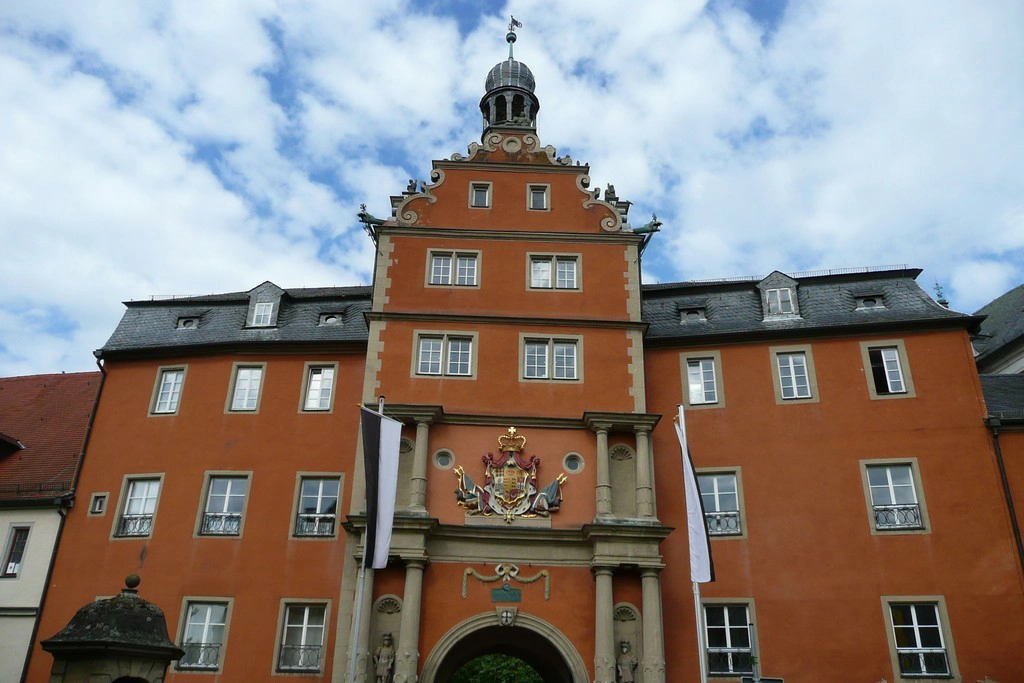
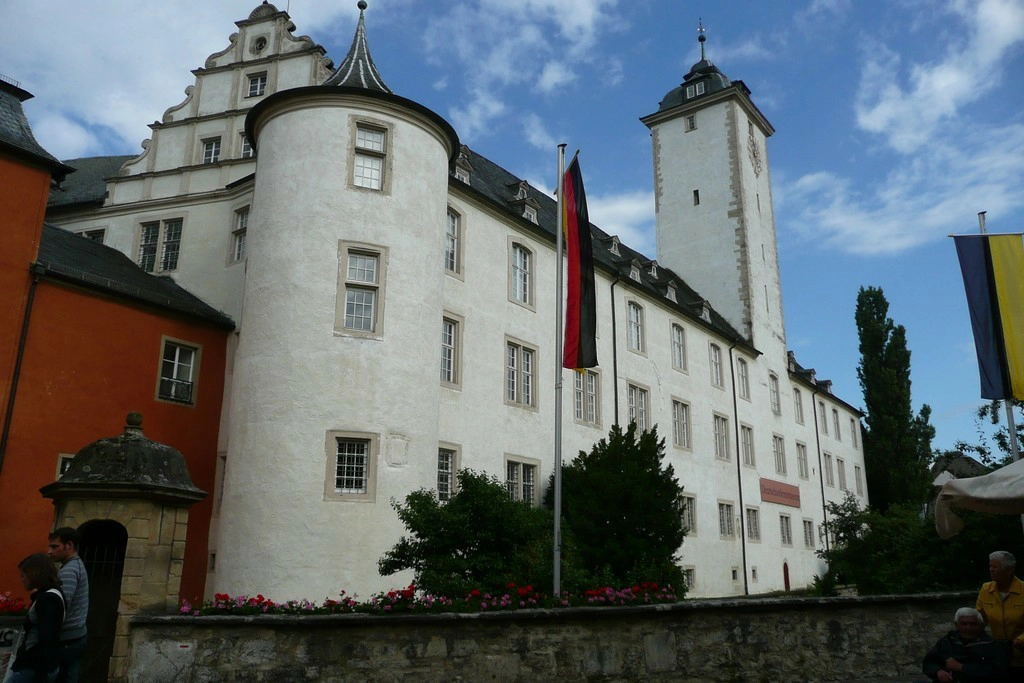
But the city deserves a visit thanks to the excellent wild park, which is located on the mountain above the city (Wildpark, Link, in winter only on weekends and holidays, you can get there from May to the end of October by bus, schedule on the website).
Northern animals are represented here: deer, roe deer (you can feed them), owls, storks, otters, bears, lynxes, wild cats, moose, birds of prey, some water birds, raccoon dogs, raccoons, martens, beavers, foxes, arctic foxes. It is better to explore the park along with an excursion, which are usually held twice a day, or go immediately after the excursion. Then you can see as many animals as possible. Lynx and wild cats are especially interesting to watch during the tour, as they are forced to jump after “prey”. In the middle of the day (and in the summer twice a day) there is a demonstration of useful animals: oxen pulling a heavy load, a dog herding sheep, etc. Unfortunately, for a family with several children, the park costs now too much, since they do not have a family ticket.
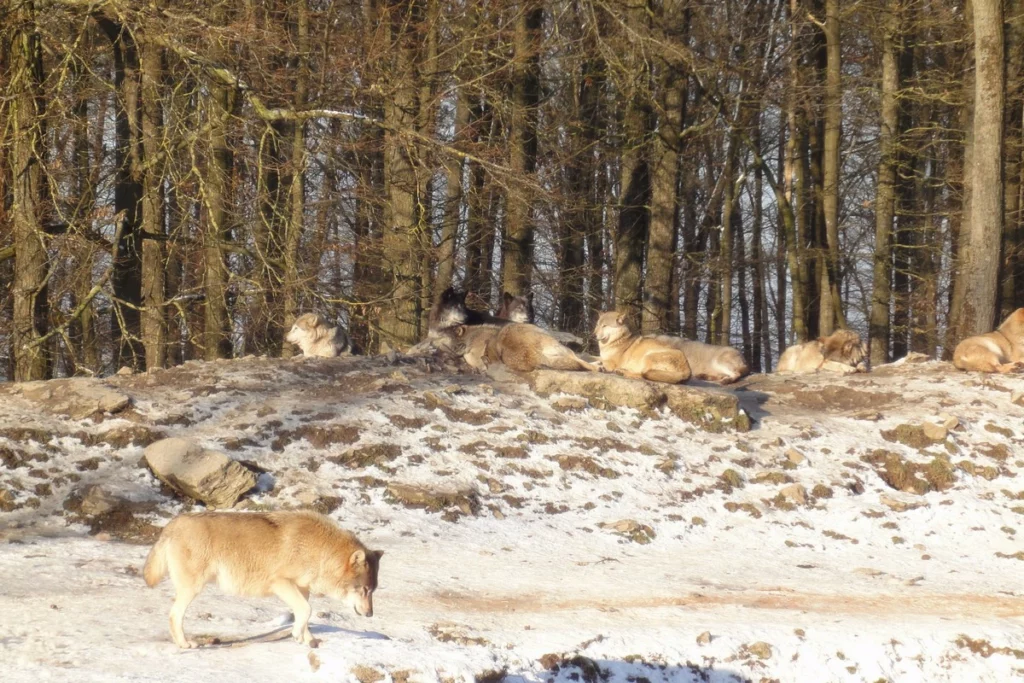
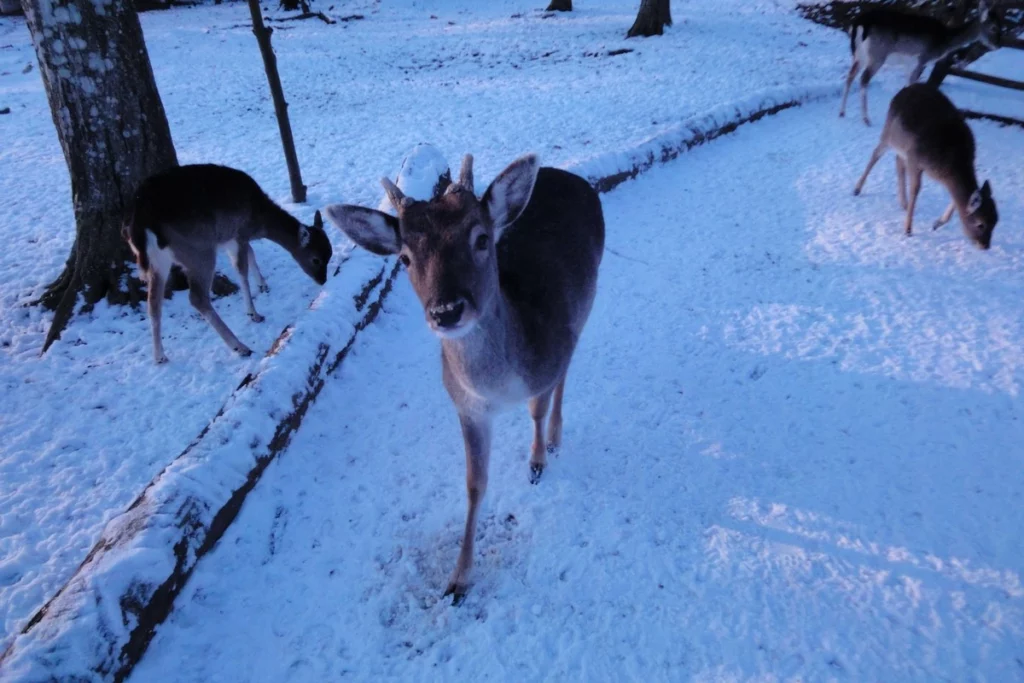
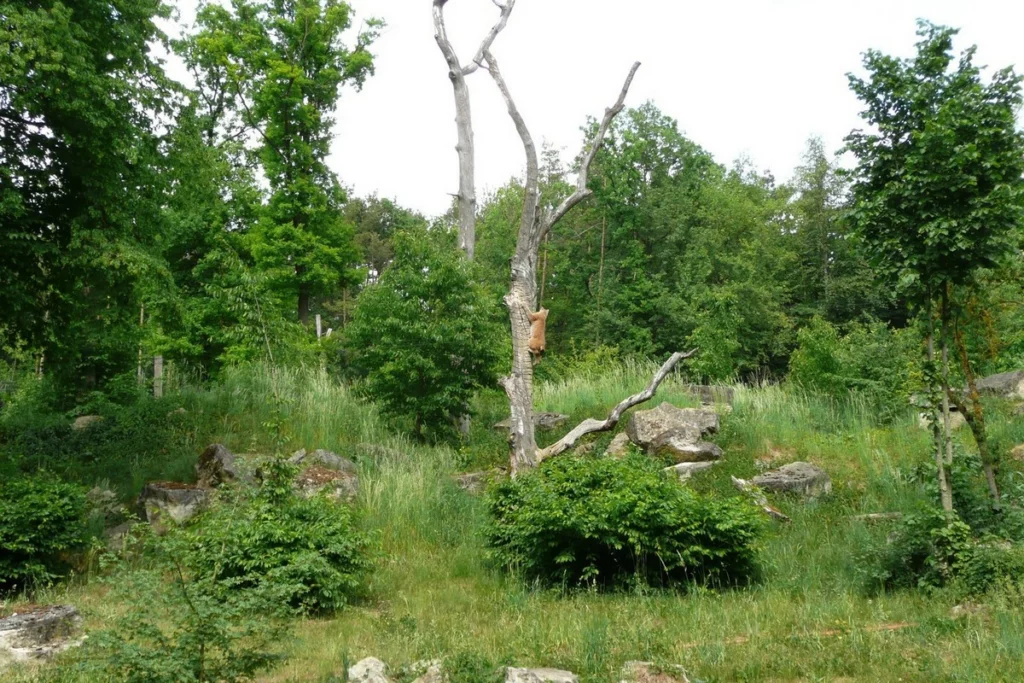
Let’s add to the list an expensive thermal pool (it’s not for nothing that the city’s name has the word “Bad”, Link) and Matthias Grünewald’s painting Stuppacher Madonna (early 16th century, Link), which is located in a church in a neighboring village.
2. Stalactite cave near Eberstadt (Eberstadter Tropfsteinhöhle)
The cave turned out to be much better than expected and really stalactitic: I thought there would be several small stalactites in the dozen empty halls, which they were very proud of. However, there are a couple of very impressive halls here, the rest are of a good average level. The most interesting thing is located almost at the very end of the route – a hall with a huge stalagmite “Wedding Cake”. Photos can be seen in Google images.
Tours are conducted in German; you can ask for a printout in English.
Link
It is better to arrive not exactly at the beginning of the excursion, but at least 10 minutes in advance; the ticket offices are located near the parking lot; you still need to walk a little further to the cave.
Public transport: train + bus, see options on the website.
During the winter, the cave is only open on weekends and holidays, with three tours in the afternoon. The excursion lasts about 50 minutes, the route is a dead end, so you need to return back along the same road, which allows you to launch only one group at a time. Photography is prohibited.
Nearby is the town of Osterburken, in the vicinity of which you can visit the park of historical reconstructions on the theme of the Middle Ages, Adventon. Medieval festivals are regularly held in the park. Link
3. Walldürn
Old town and the pilgrimage basilica of St. George, which has the special status of a “minor basilica”. The pilgrimage began after a miracle in 1330, when an image of the crucified Christ appeared on the fabric instead of spilled wine. Now up to 100 thousand people take part in the pilgrimage and festival. Celebrations take place in late May – June (Corpus Christi day).
Above Walldurn, on a short route to the Main, is the open-air museum in Gottersdorf (Link). The museum is small, but you can easily spend a couple of hours on it. Old houses from the Odenwald are collected here, and since the region is not rich, the houses are mostly very cramped and poor – which is rather rare, since such museums often collect houses of wealthier peasants, they are more well-kept and better preserved. A picturesque serpentine road descends to Miltenberg.

Maina valley from serpentine
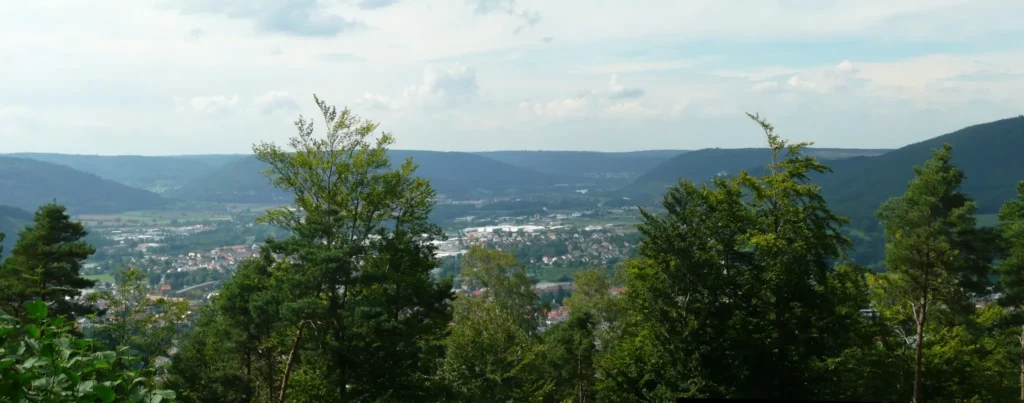
4. Amorbach
Amorbach is a small town in a valley between gorges. The local attraction is a large Baroque monastery and a park attached to it. The princely church houses the largest baroque organ in Europe. There is also one unusual museum: a collection of over 2,500 teapots along with Pepsi-Cola promotional items, dolls and teddy bears in a large greenhouse.
5. Michelstadt and Erbach
The two cities are located very close to each other.
In Erbach there is a palace with an interesting collection (antique sculpture, ivory figurines, armor, a knight’s hall, porcelain). People are allowed into the palace only with a scheduled tour (quite rare, see in advance). We didn’t go because it lasts almost an hour and a half, which is too tiring with children (already checked), but from the photographs it should be quite interesting. In addition, there is the German Ivory Museum, where you can see figurines from different continents, as well as a carver at work.

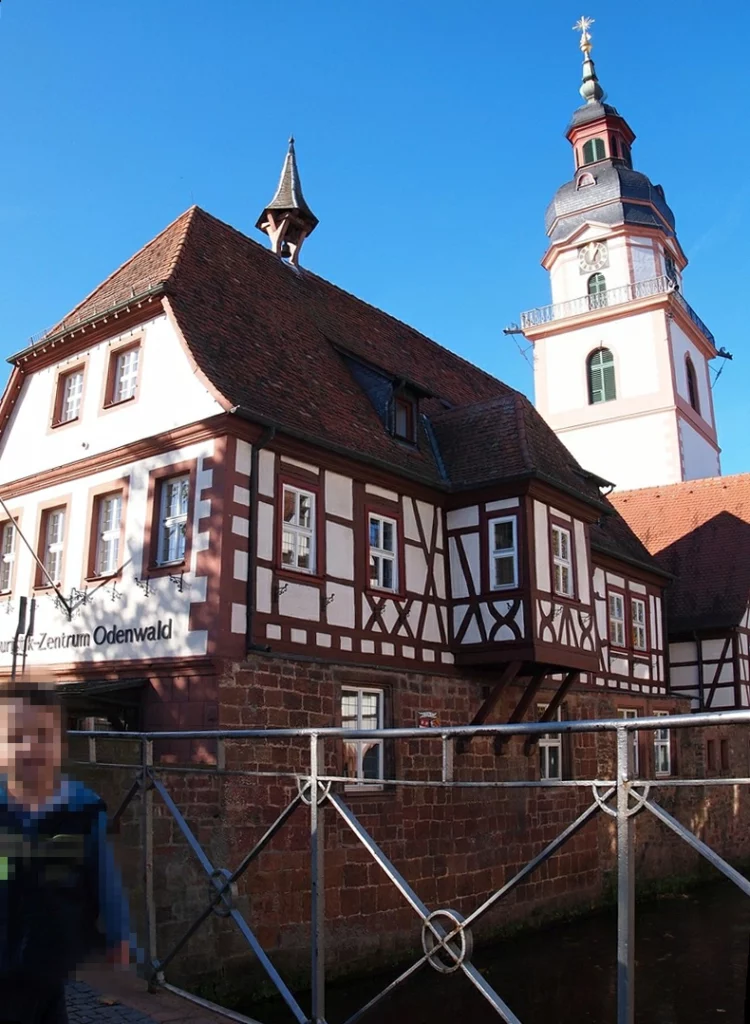
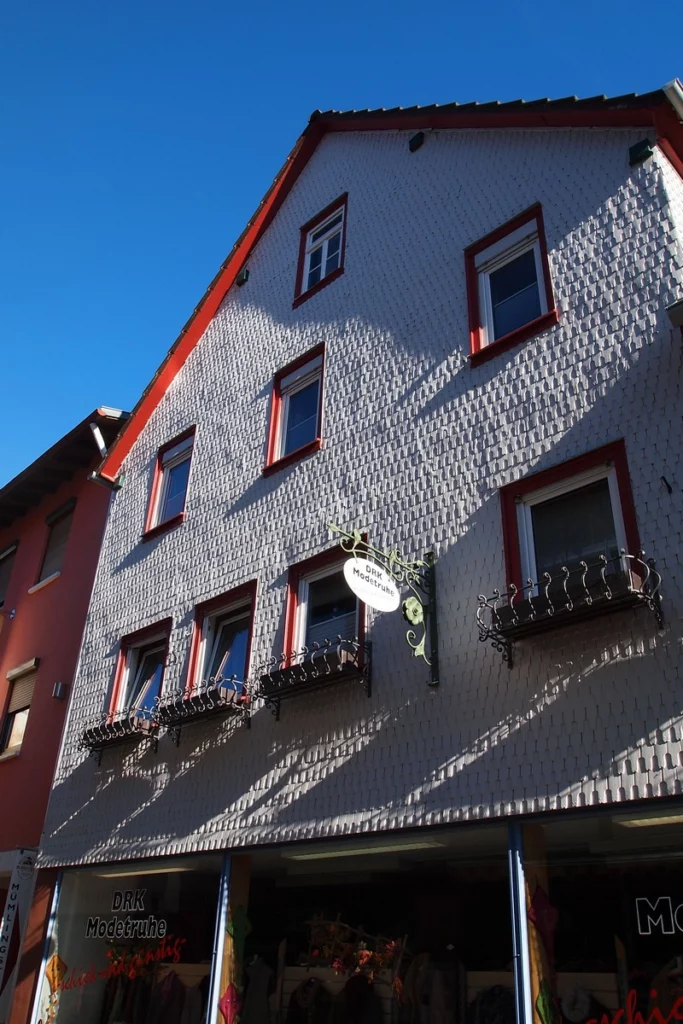
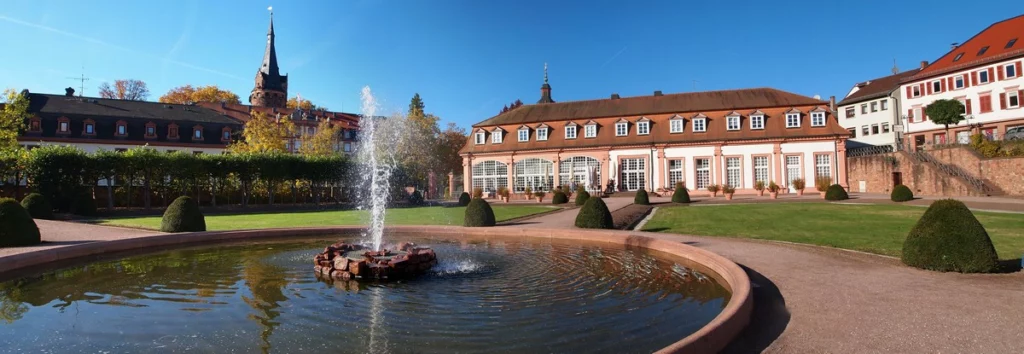



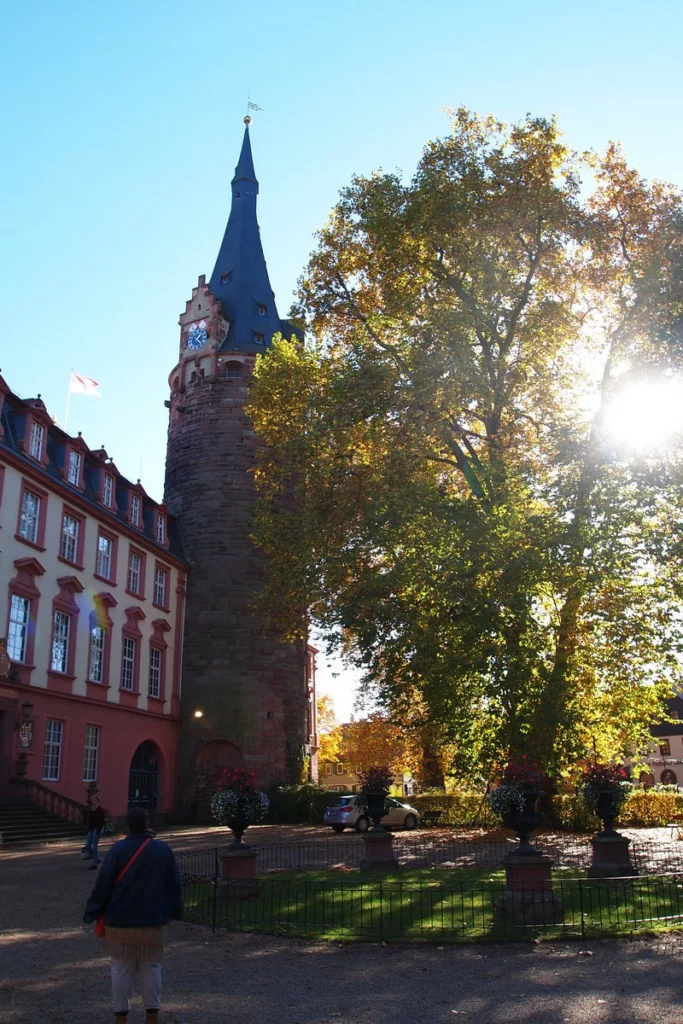
Michelstadt has a nice old half-timbered center with a partially preserved city wall. Across the river (20-30 minutes on foot) there is an old castle (13th century, view only from the outside) and a basilica from the 9th century. There is also an Odenwald Museum, a motorcycle museum and a private ivory figurines museum.
The town hall from 1484.
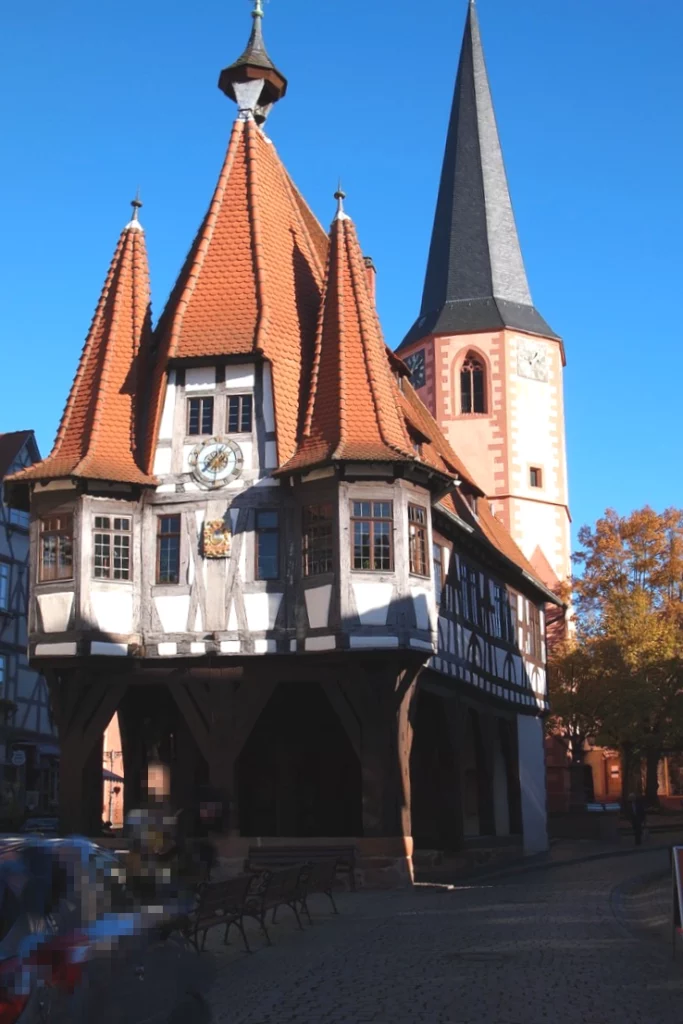
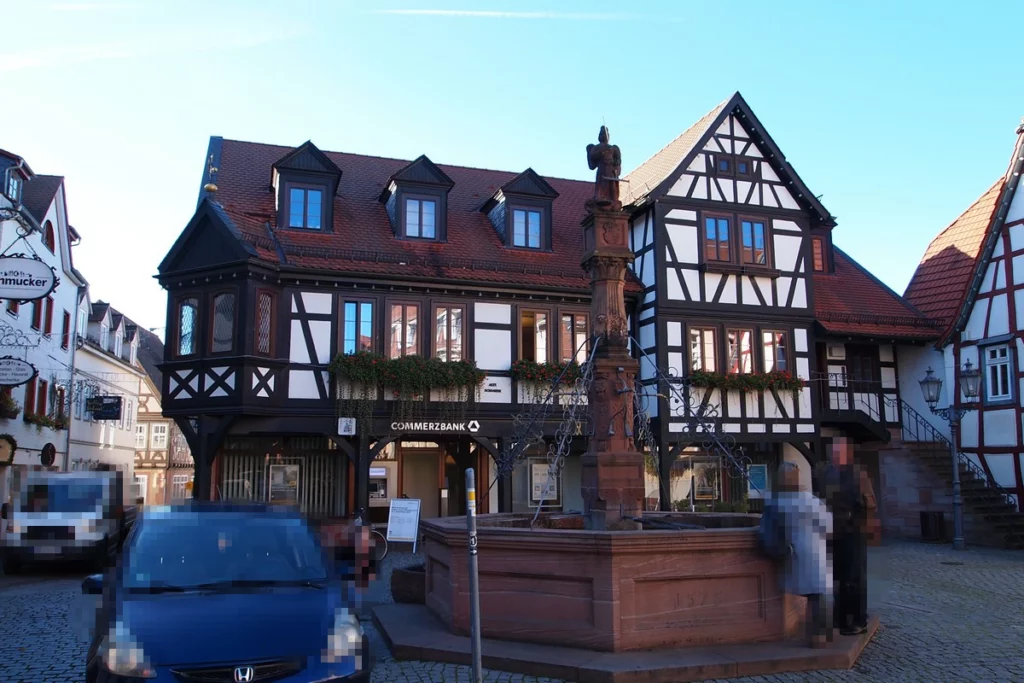


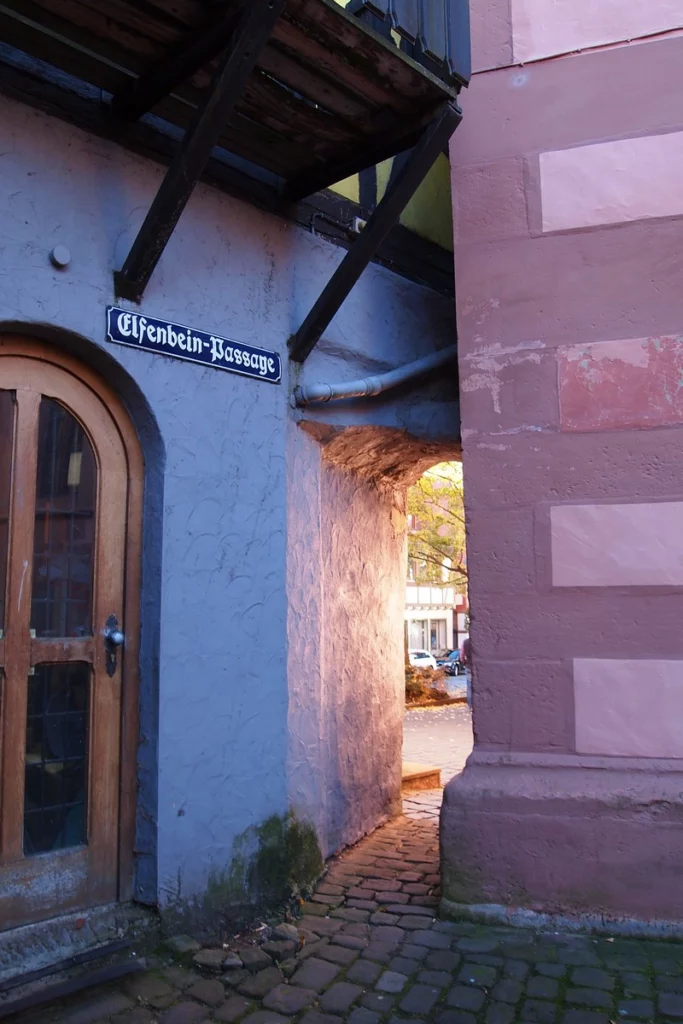
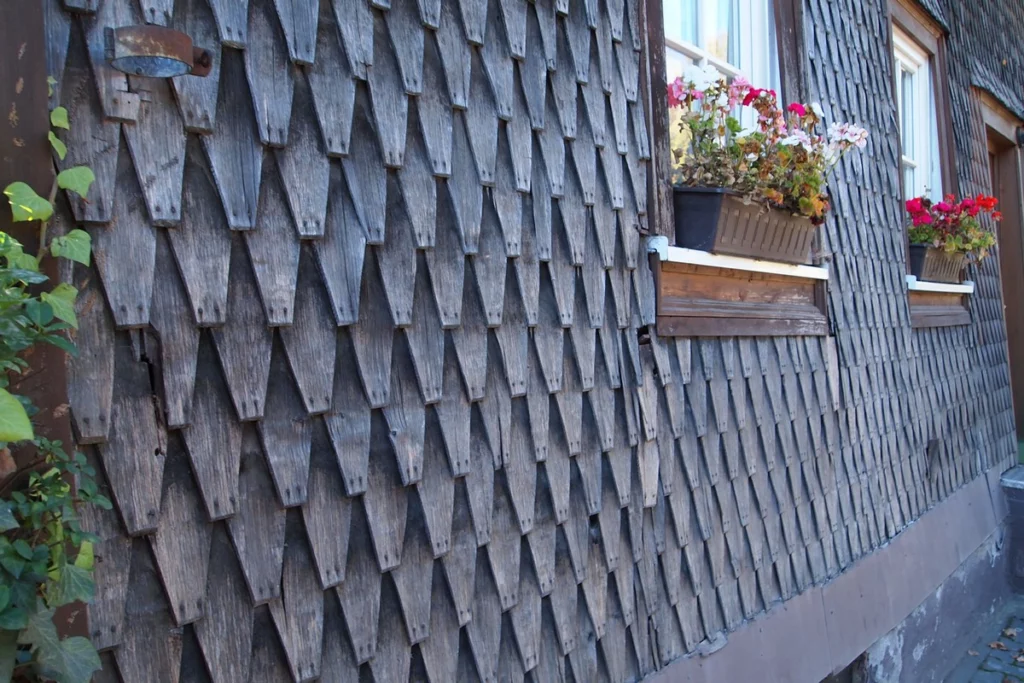
Fürstenau castle
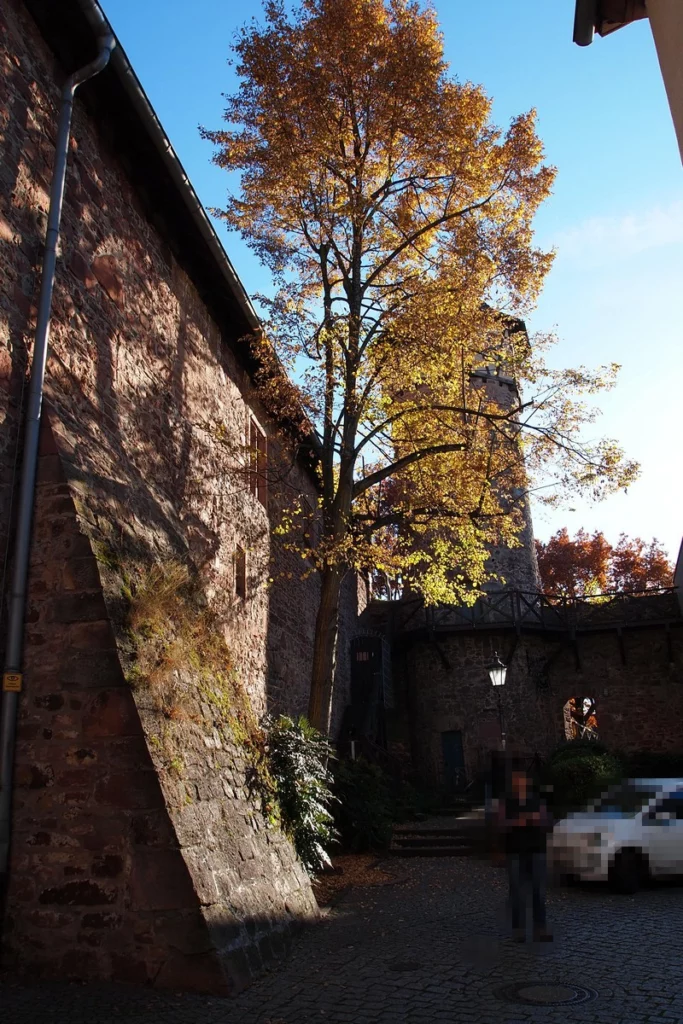
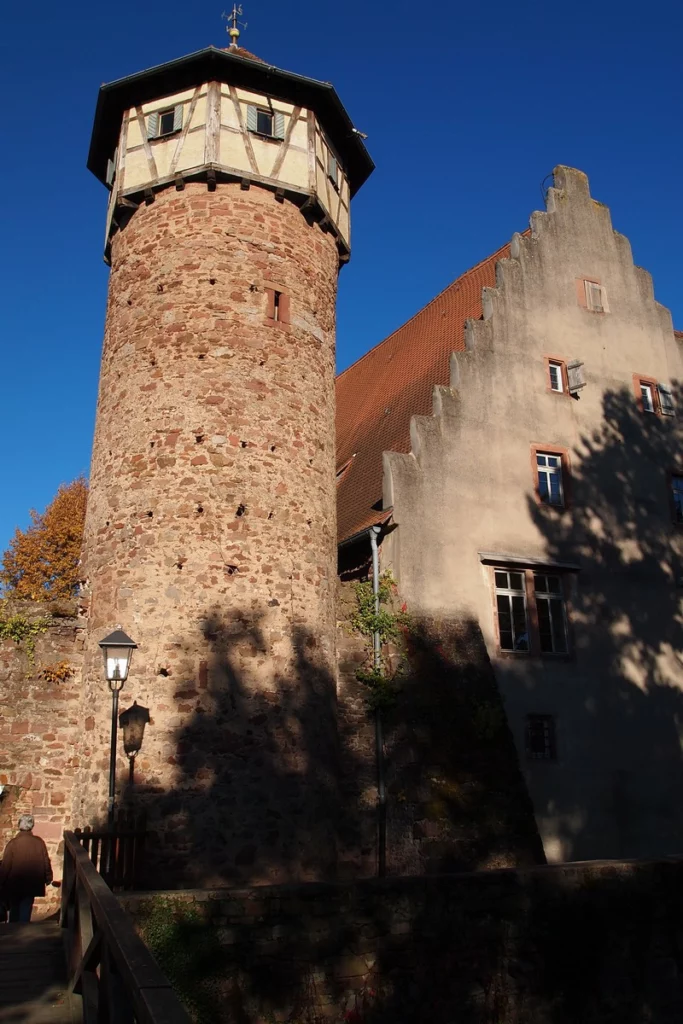




Reservoir on the way.

Follow me
6. Bergstraße: Zwingenberg, Auerbach and Bensheim. “Rocks sea”
Three old cities. Each has viewpoints/castle ruins on nearby mountains.
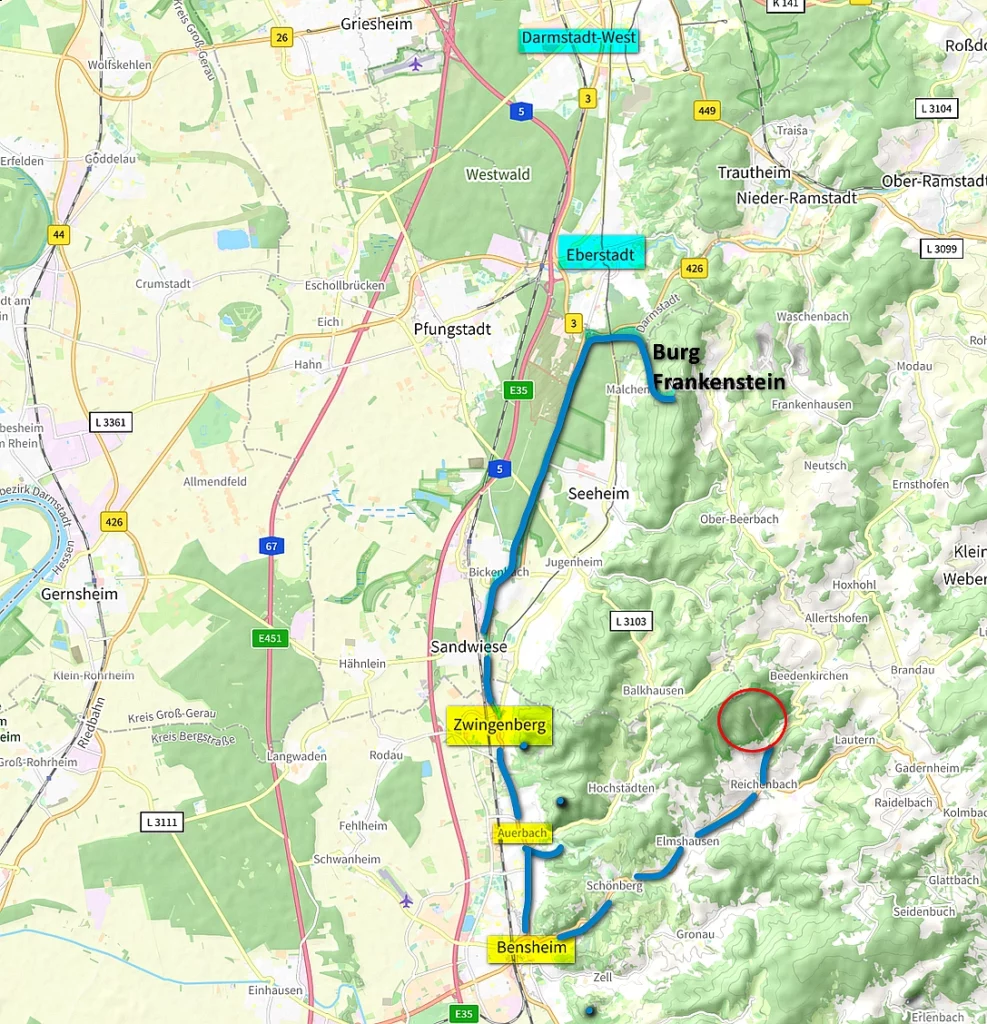
Bensheim has a fairly large, but rather average old town.
6. Bergstraße: Zwingenberg, Auerbach und Bensheim. Felsenmeer
Drei alte Städte. Jedes verfügt über Aussichtspunkte / Burgruinen auf den nahegelegenen Bergen.

Bensheim hat eine ziemlich große, aber eher durchschnittliche Altstadt.


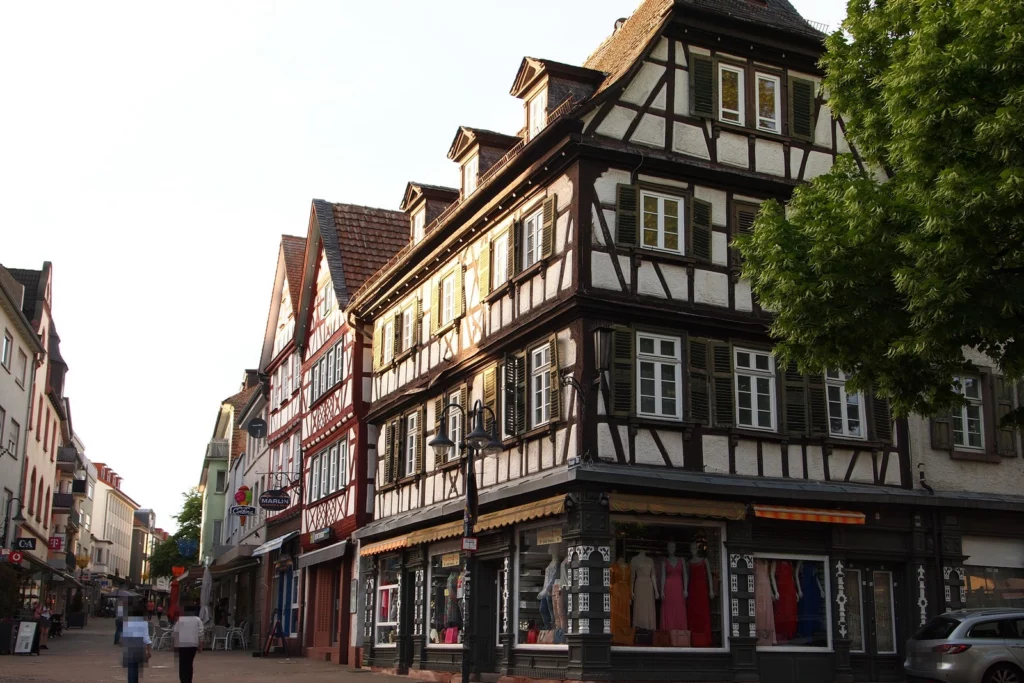

In Auerbach there is the landscape park Staatspark Fürstenlager and the picturesque ruins of Auerbach.
Unusual geological formation Rocks Sea (Felsenmeer) in Lautertal.
In short and as far as I understand:
– geological formation is the result of the joining of ancient continents to form Pangea. In those days they were still at the equator.
– pebbles called quarzdiorit a depth of 10 km cooled and shriveled and cracked.
– When the Rhine Valley was formed, stones came out. There were more cracks, the stones acquired their own specific shape.
– during the Ice Age, all this froze and when it melted, small stones, sand and gravel were carried away, but the stones remained in this form.
If you are short on time, then you can only see the giant stone tongue descending into the valley. To do this, you need to drive a couple more kilometers from Bensheim deep into the Odenwald and follow the signs for Felsenmeer. If you have more time, you can take a walk through the local mountains: on the slopes there are stones of various shapes.
Everyone, of course, climbs on rocks, although there is a good serpentine road nearby. This seems easy, but the problem is that the easy segments tend to change into the hard segments without warning. Many stones are larger than human height, and there are correspondingly sized gaps between them. Feeling the need to “look after the child,” who was jumping up the rocks with the ease of a mountain goat, I decided to remember my youth and climbed after him. Everything was going well until the moment when for some reason I looked down and saw cracks a couple of meters deep on all sides. It’s a terrible feeling when you realize that you can’t go forward or backward and you’re standing in an embrace with a stone.
Exit of a stone tongue into the valley.
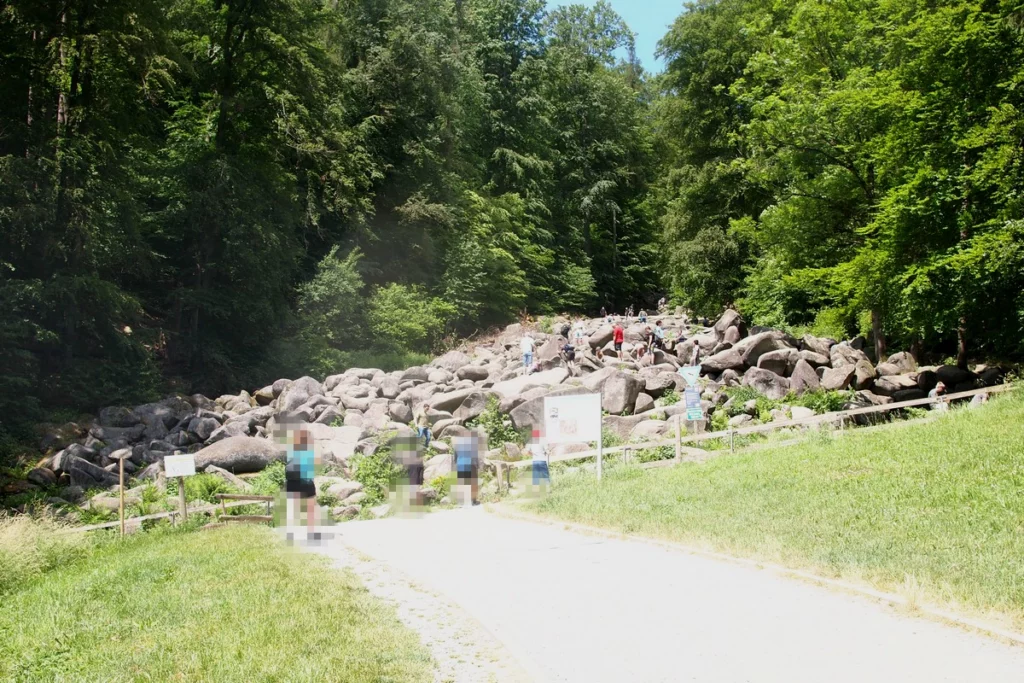

We compare the size of the people with the size of the pebbles. This is about a sixth of the stone tongue.
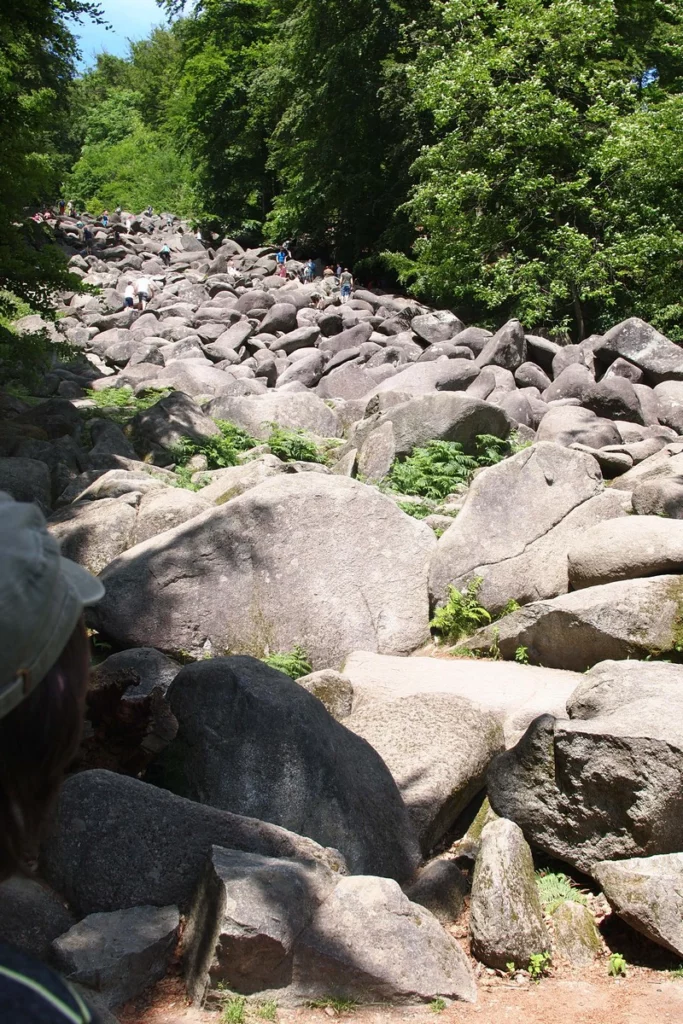
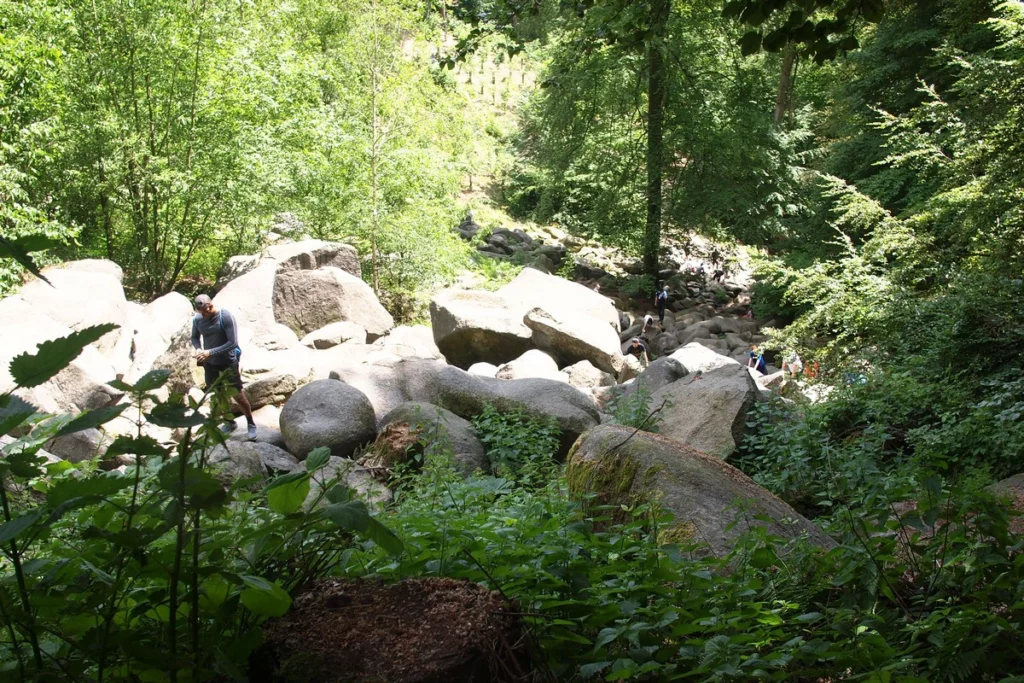
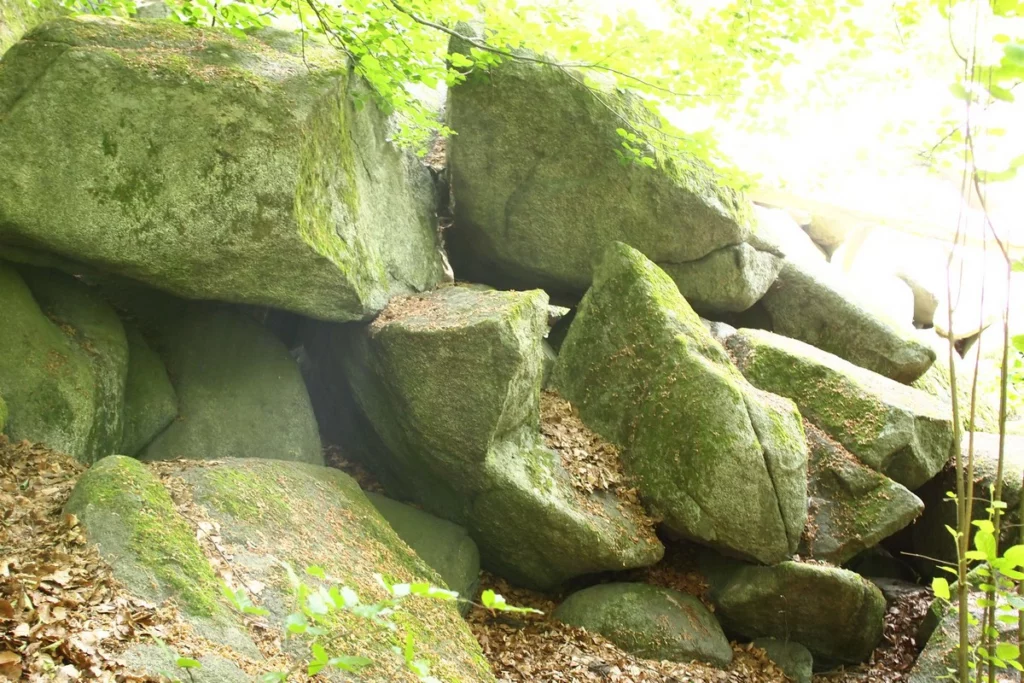
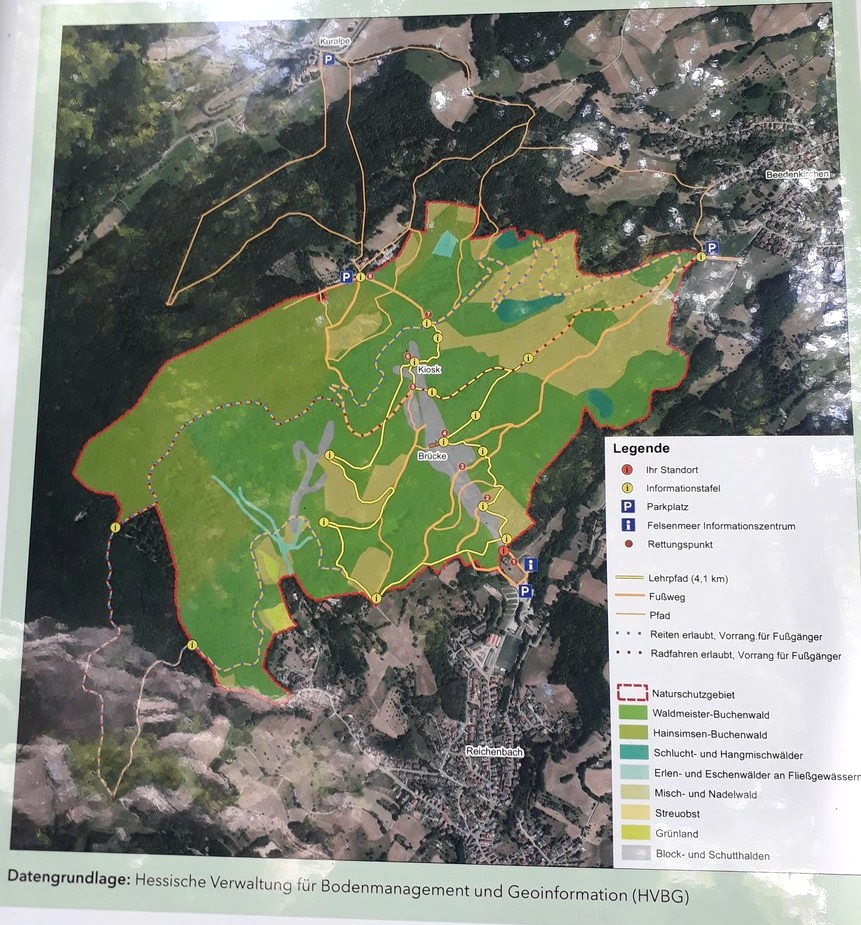
The “deposit” was used by the Romans, which is why the information center has a reconstruction of an ancient Roman saw.
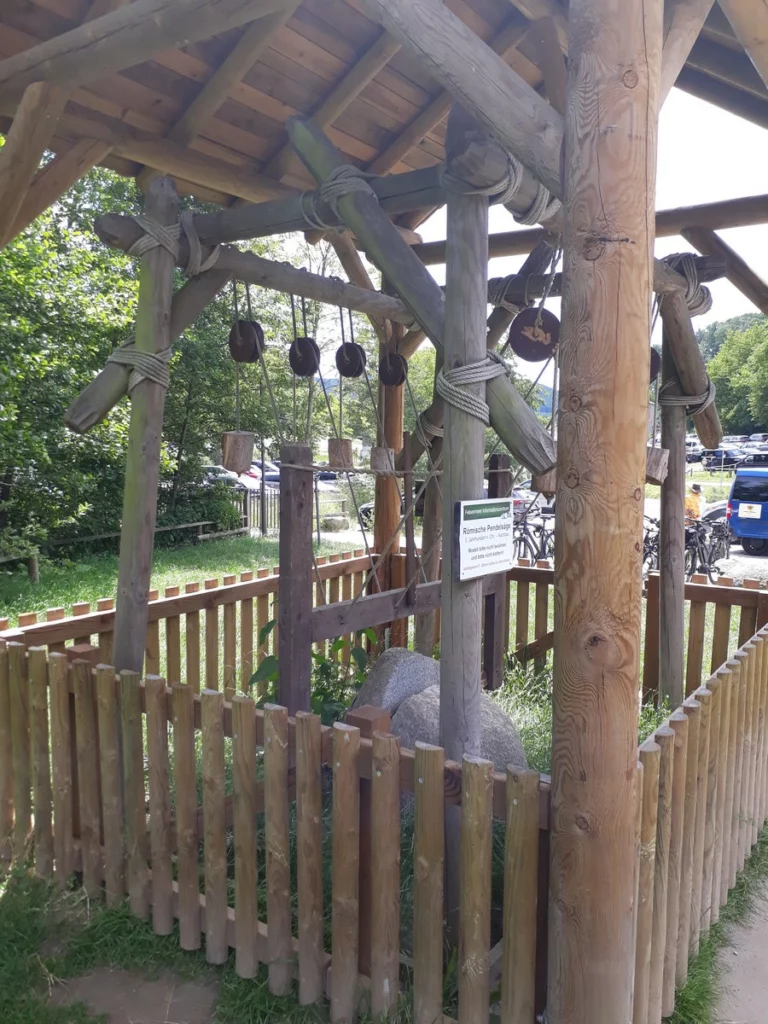
7. Lorsch monastery and Heppenheim
Lorsch. Former imperial monastery of Charlemagne, founded in 764. Included in the UNESCO list. The monastery existed until the 30 Years’ War. Link
Several buildings have survived (the royal hall, a fragment of a wall and a fragment of the basilica).




Nearby, the Lauresham open-air museum is dedicated to life in the early Middle Ages.


Also nearby is Wildpark Jägersburg

Heppenheim has a picturesque old town on the hill with houses from the 17th century. The church was built at the beginning of the 20th century.
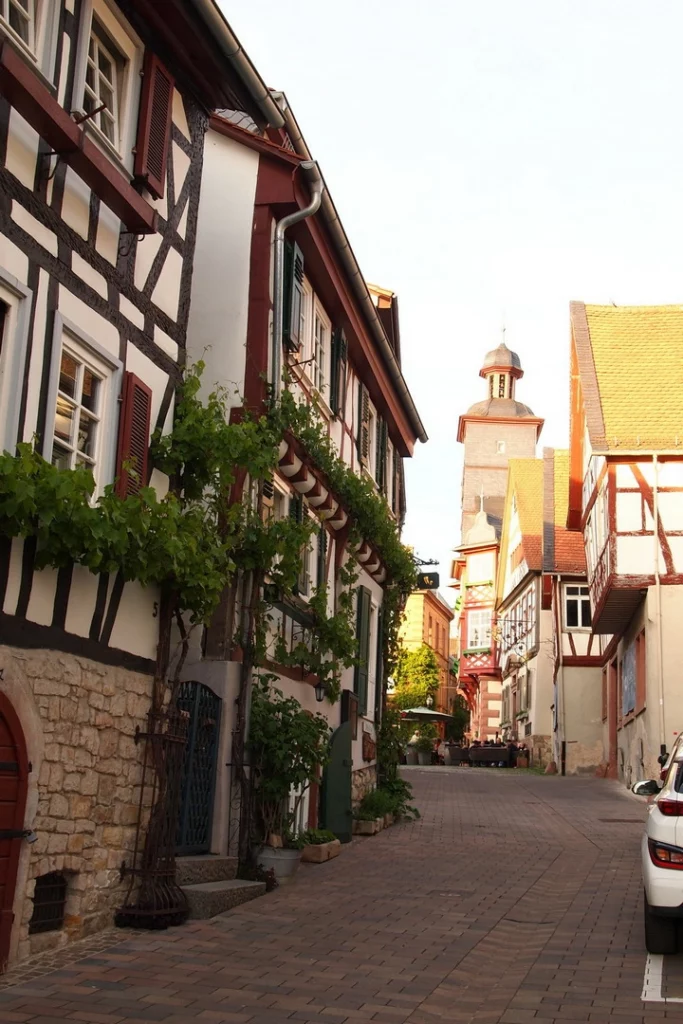




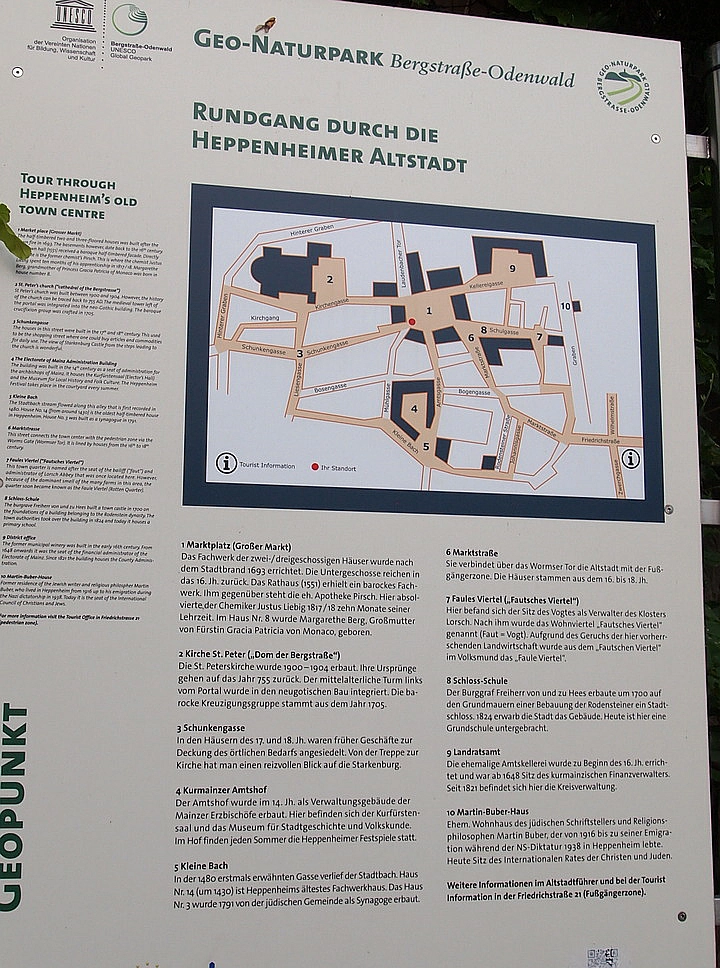

8. Weinheim
A picturesque old town, two castles on the hills, a very beautiful garden.
Thermal pool Miramar
More about: Weinheim Old town
You can get there by train and tram from Heidelberg or Mannheim.
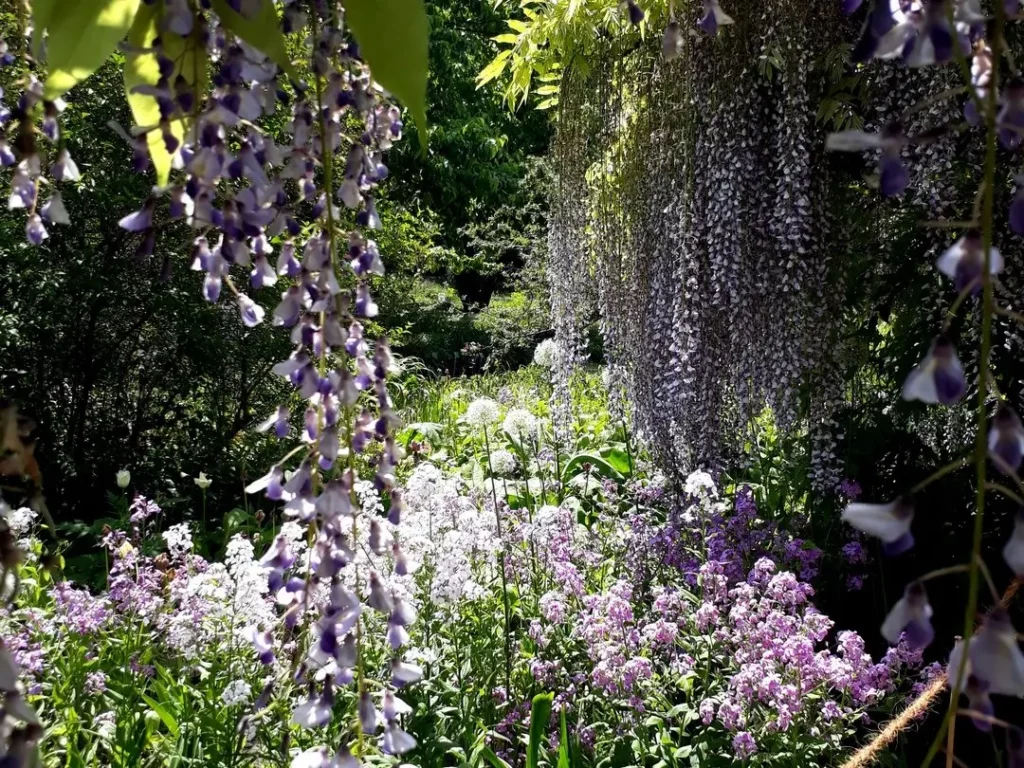
Birkenau – village with a collection of more than 100 sun hours.
9. Fürth
A couple of things to do around the city of Fürth:
– Odenwald model railway Link
– mountain animal zoo Link
10. Wald-Michelbach
Entertainment park: coaster, rope park, wooden marble run and playground. Link
11. Speyer
Old town, imperial cathedral
Technik museum Link
Sealife Link
thermal pool
rope park

12. Schwetzingen
Park with summer residence and Rococo theater. Link
Schwetzingen. Cherry blossom garden

13. Heidelberg
Old town, castle. Link
Funicular Link
Museum of the student jail (during the high season it is better to book in advance) Link
Museum of the region – Kurpfälzisches Museum Link
Zoo Link
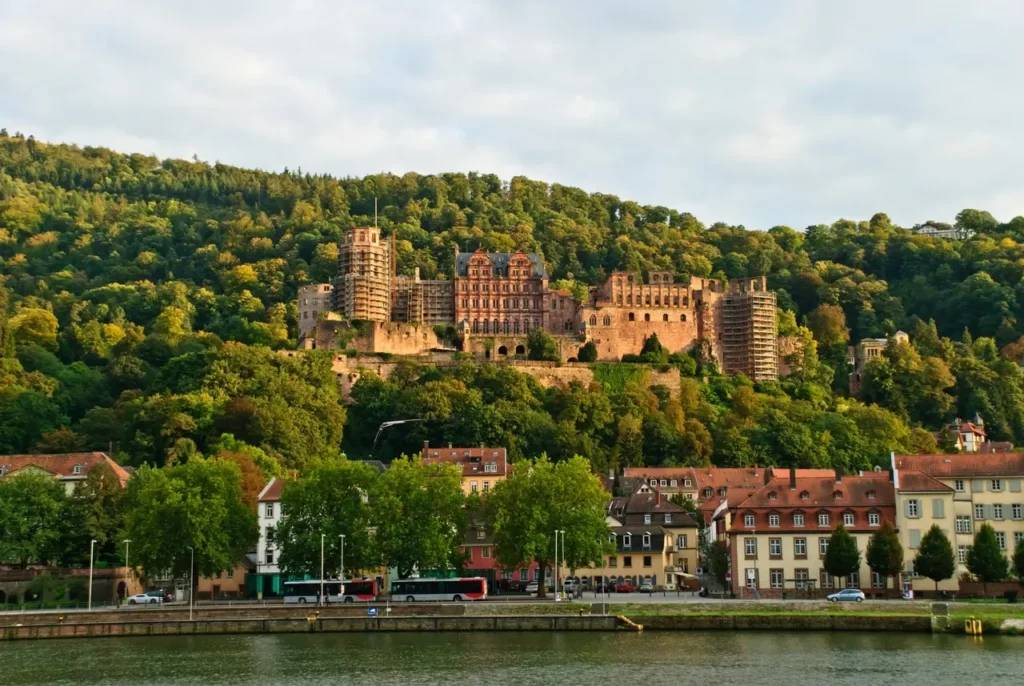
14. Ladenburg and Schriesheim
Schriesheim: old town, castle ruins on the hill
Anna Elizabeth Mine – silver mining in the Middle Ages Link
Ladenburg was an administrative center under the Romans. Since then, the foundations of the fortification and harbor have remained. Roman finds are on display at the Lobdengau Museum, which is located in the former episcopal residence. Link
Also included is the old town, the Gothic church, the Karl Benz House Museum and the Benz Factory (the museum is open 3 days a week) Link.
The old town of Ladenburg is unexpectedly beautiful.
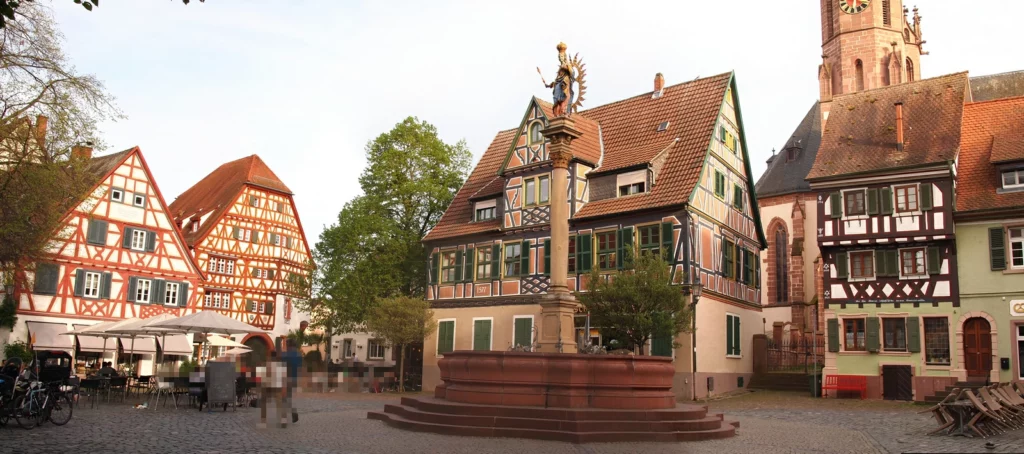

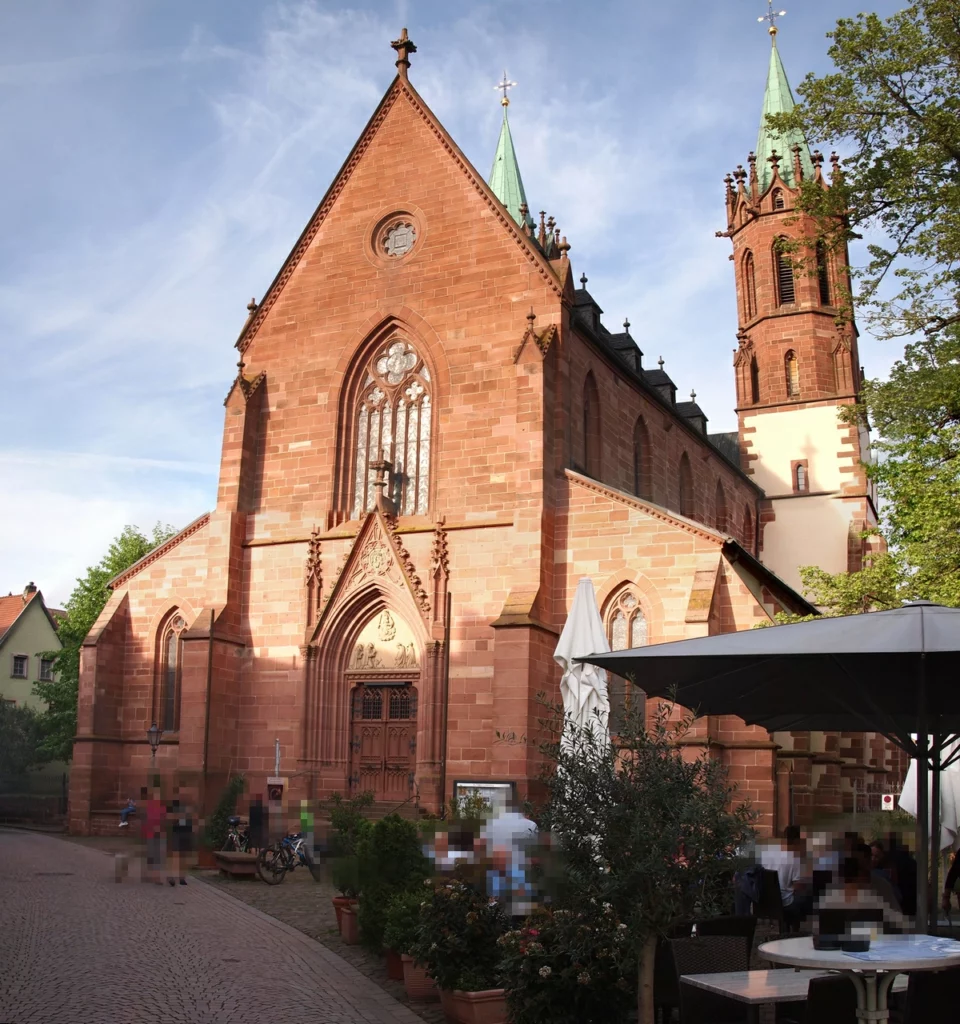
At the factory you can see a collection of Benz cars, including the one in which Bertha Benz went on the first ever long journey by car. The museum is not very large, but very informative, you can spend a lot of time in it if you study all the details and carefully read the signs.
In addition to the first Benz cars (and here are two of the three surviving cars in the world produced at this first factory on display), there are also Benz-Daimler cars and several from other manufacturers (old Fords, for example), a number of bicycles and smaller exhibits. One room is dedicated to sports cars – from old ones to Formula 1 (Mika Hakkinen’s car). The museum is definitely recommended.
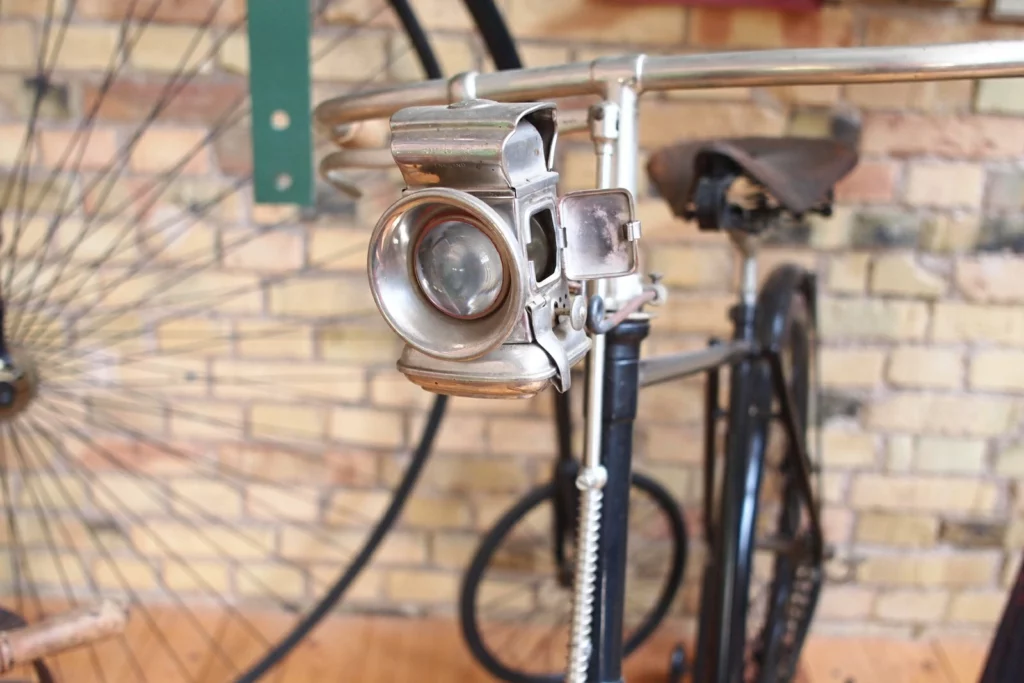
The mannequin, of course, is superfluous – it doesn’t look like Bertha Benz at all. The story of Bertha Benz’s journey to Pforzheim is told here in more detail than in other museums; hairpins and stockings, which were used to repair and improve the mechanism, and bottles of fuel from the pharmacy are on display. Of course, this was not a trip to the ends of the world, but still with children, on a completely new type of vehicle and Pforzheim is not a neighboring city.

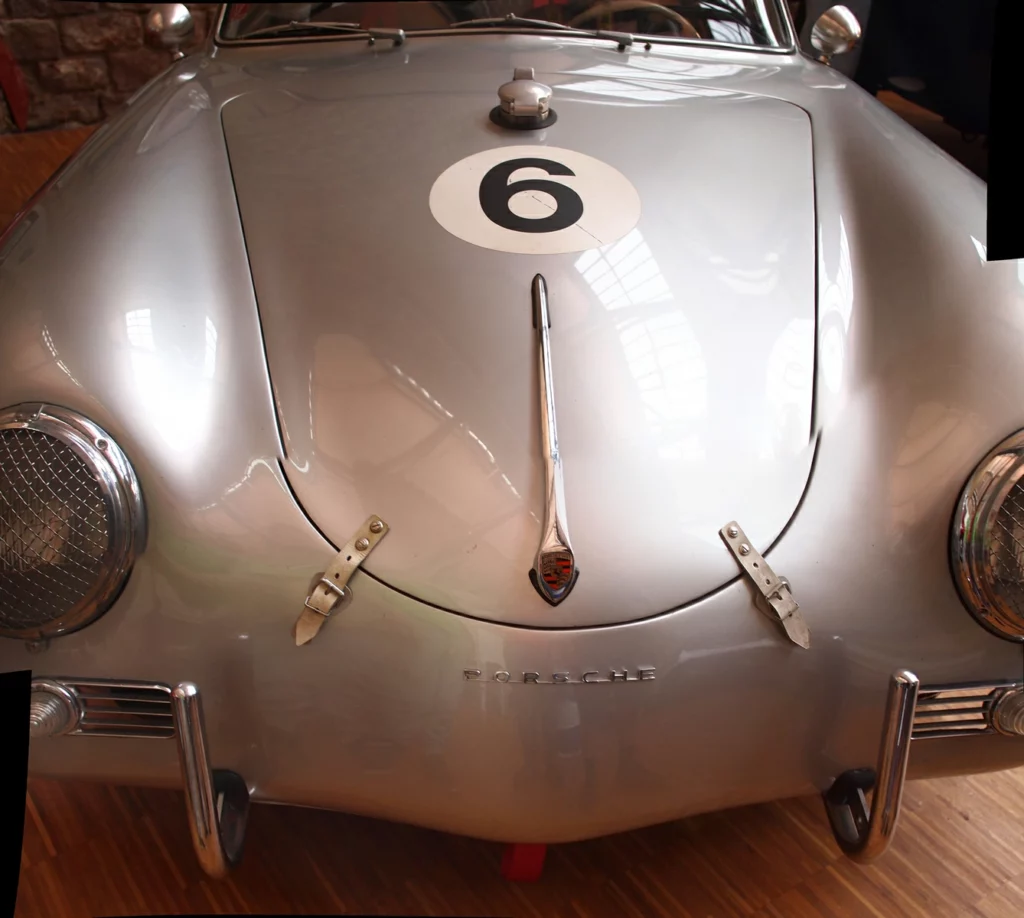
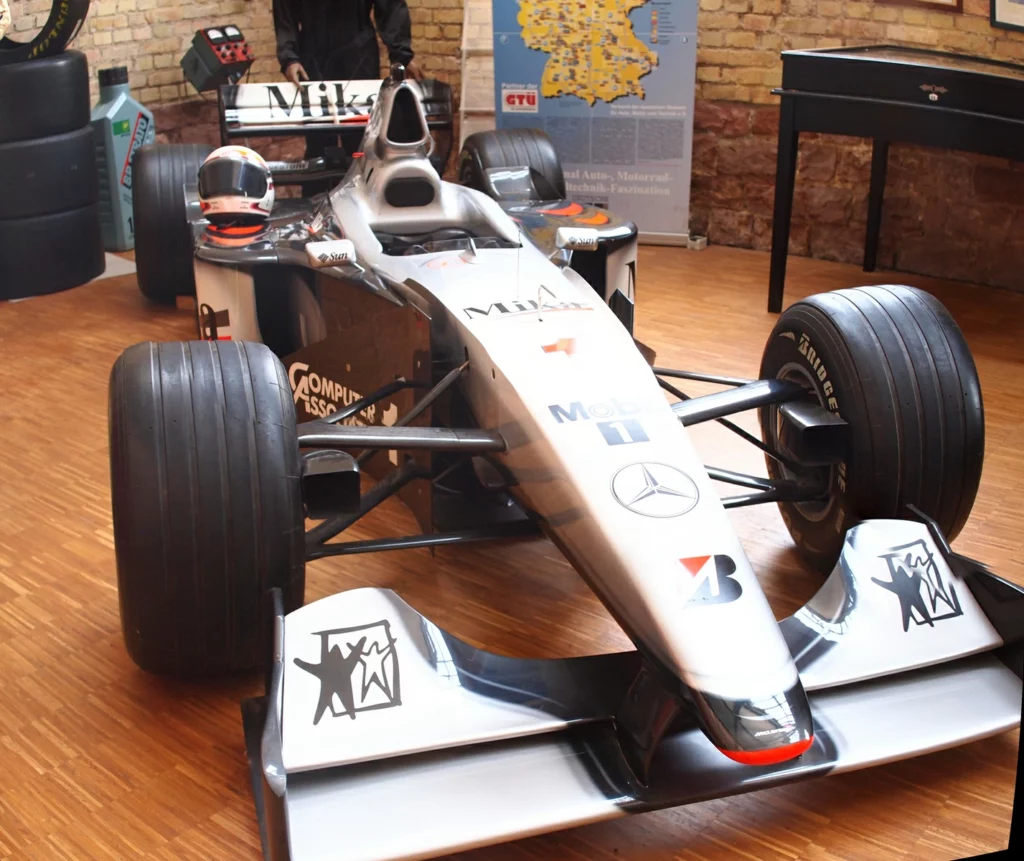
Cycle route Ladenburg – Heidelberg – Dossenheim – Schriesheim
Bergstrasse is also a “flower” route, at least in April. The triangle Ladenburg – Heidelberg – Schriesheim is suitable for a spring trip, including with children.
The road is flat almost all the time, with the exception of a few places (indicated by an arrow). You can park in the large parking lot indicated on the map. There is a ferry nearby, very inexpensive.
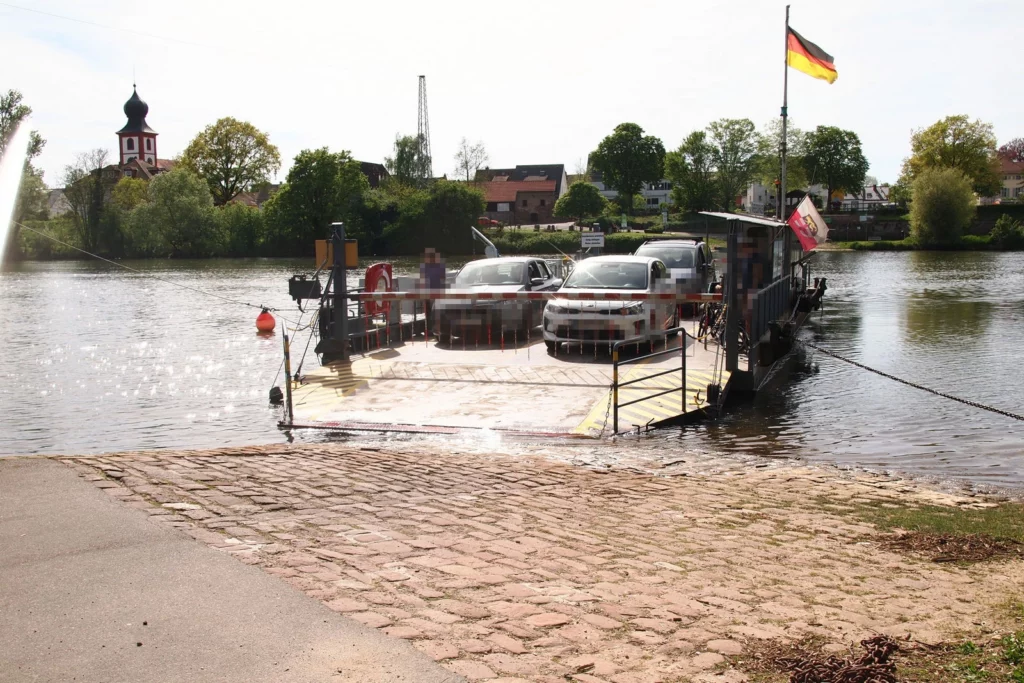


Castle ruins on the outskirts of Heidelberg (Handschuhsheim)

Blue indicates the most comfortable roads (bicycle roads or very quiet local roads), crimson indicates bicycle lanes separated from the road by a line or city streets without active traffic, and red indicates roads. Blue circles and M – attractions and museums.
If you don’t see the map, please enable advertising and cookies.
15, 16. Neckar valley and Castle road
Part 1 Castle Road (Burgenstrasse). 1. Neckar cycle route Mannheim – Eberbach.
Part 2 Castle Road. 2. Neckar valley cycle route. From Zwingenberg to Bad Wimpfen
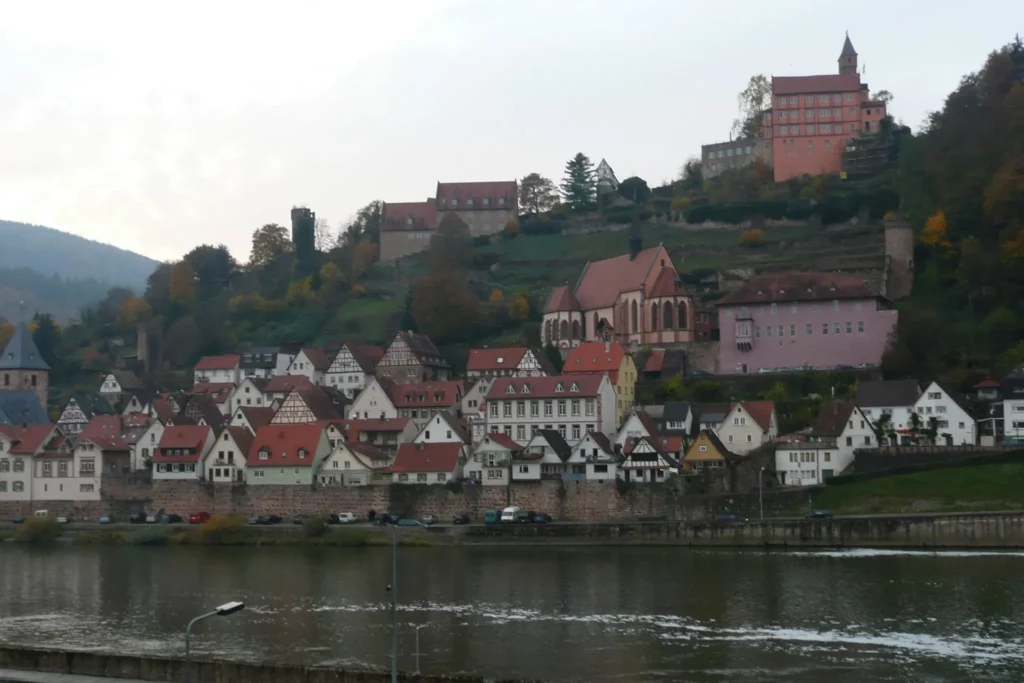
17. Sinsheim and Schwarzach zoo
Sinsheim:
second site of the technik museum Link
thermal pool (for children over 3 years old only on Saturdays),
climate museum (new and not yet clear if it’s worth it) Link
large all generation playground in the city center.
Technik museum Sinsheim. IMAX cinema
Zoo Schwarzach. The small but pleasant zoo is located away from popular routes and is visited mainly by residents of the near and distant surroundings (Link, train to Aglasterhausen, then bus). The most popular animal in the zoo is undoubtedly the small steam locomotive at the entrance, for which you have to pay separately. The rest of the animals are mainly birds and ungulates: a large enclosure for deer, zebra, goats.
18. Jagst and Kocher route
One of the popular routes among cyclists and motorcyclists is the route along two rivers. At one time, narrow-gauge railways ran along both rivers, but over time they were dismantled and paved for bicycle roads. There is nothing stunning here, but there are cute small half-timbered towns and pleasant rural landscapes.
Along Jagst valley to the north of A6, Jagsthausen is most known – a small town with a couple of small castles and a very popular summer theater. The Rotes Schloss restaurant-castle is also known.
The most famous of the local nobles was Götz von Berlichingen. Knight Götz lived in the 15th and 16th centuries, participated in various battles, lost his arm, which he replaced with an iron prosthesis, participated in the peasant war, was imprisoned in the Heilbronn tower and lived a surprisingly long life. This character, and especially his iron hand, periodically appears in various literary works, and Goethe honored him with an entire play. The modern von Berlichingen of Jagsthausen are descendants of his brother.
The Schöntal monastery is located very close to Jagsthausen. This monastery was founded back in the 12th century, during its heyday in the 17th and 18th centuries it was rebuilt in Baroque style. Now the monastery is not activ, it operates a hotel and hosts events. The church of the former monastery can be visited. There is a café-confectionery on site.


At the Kocher north of the A6, Künzelsau can be interesting: Museum Würth (contemporary art), Museum for the Future at the Mustang clothing factory, funicular.
Maps nearby:
North: Spessart. Mespelbrunn castle
East: Romantic Franconia
From Ulm to Ellwangen. Albtrauf and Bavarian Swabia
North-West: Attractions around Frankfurt am Main, along the Rhine to Koblenz
Castles on the Middle Rhine on the map. 1. From Rüdesheim to Bacharach
South: Castle Road (Burgenstrasse). 1. Neckar cycle route Mannheim – Eberbach
Castle Road. 2. Neckar valley cycle route. From Zwingenberg to Bad Wimpfen
Castle Road. 3. From Sinsheim to Rothenburg ob der Tauber
90+ parks and gardens in Germany on the map
Do you enjoy the site without cookies? This means that I work for you at my own expense.
Perhaps you would like to support my work here.
Or change your cookie settings here. I don’t use personalized ads

